| Atlantic Estuarine Research Society |
| login |
Honorary members |
| Last Name | First Name | Year Awarded | Affiliation | Notes |
| Bartholomew | Joy | 2012 | ERF | |
| Bookhout | Cazlyn | Duke Marine Lab | Deceased 8/03 | |
| Boynton | Walter | 2017 | Chesapeake Biological Lab, UMCES | |
| Castagna | Mike | 1983 | ||
| Cargo | David | Chesapeake Biological Lab, UMCES | Deceased | |
| Carriker | Melbourne | College of Marine Studies, Univ Delaware | Deceased 2007 | |
| Chestnut | Alphonse | 1981 | University of North Carolina | |
| Costlow | John | Duke Marine Lab | Deceased 4/09 | |
| Cronin | Gene | |||
| Cronin | William | JHU Chesapeake Bay Institute | Deceased | |
| Cross | Ford | NOAA Beaufort Laboratory | ||
| Dauer | Daniel | 2018 | Old Dominion Univ. Prof Emeritus | |
| Diaz | Robert | 2013 | VIMS - Coll. William & Mary | |
| Hargis | William | VIMS - Coll. William & Mary | Deceased 10/08 | |
| Haven | Dexter | VIMS - Coll. William & Mary | Deceased 2011 | |
| Heyer | Christopher | 2017 | YSI | |
| Jones | Christopher | 2015 | George Mason Univ. | |
| Kennedy | Victor | 1995 | Horn Point Lab (UMCES) | |
| Lippson | Alice | Chesapeake Biological Lab, Martin Marietta | ||
| Marshall | Nelson | VIMS / Univ. Rhode Island / Horn Point Lab | Deceased 3/09 | |
| McDermott | John | Franklin & Marshall College | ||
| McHugh | John | SUNY Stony Brook | ||
| Mihursky | Joseph | Chesapeake Biological Lab, UMCES | ||
| Mountford | Kent | Cove Corporation | ||
| Mountford | Nancy | Cove Corporation | ||
| O'Malley-Walsh | Marria | 2001 | EPA | |
| Patrick | Ruth | 2006 | Academy of Natural Sciences, Drexel University | Deceased 9/14 |
| Paul | Robert | 2017 | St Mary's College of Maryland | |
| Phelps | Harriette | 2011 | University of the District of Columbia | |
| Pritcher | Don | |||
| Rebach | Steve | Dir., NC Sea Grant/ Univ. of MD Eastern Shore | ||
| Schwarzschild | Arthur | 2017, posthumous | U. VA | Deceased 3/17 |
| Tanner | Christopher | 2017 | St Mary's College of Maryland | |
| Van Engel | Willard | VIMS - Coll. William & Mary | Deceased 2010 | |
| Vernberg | John | Baruch Inst Univ S Carolina | ||
| Williams | Jerome | 2013, posthumous | US Naval Academy | Deceased |
| Williams | Richard | NMFS Radiobiological Lab Beaufort, NC; NSF |

Bookhout, Cazlyn (deceased, 8/4/2003)
 Cazlyn Green Bookhout, “Bookie,” as he was affectionately known throughout the international marine community, received his doctoral degree in 1934 from Duke University and joined the Duke faculty in the Department of Zoology in 1935. He was among the first faculty at the Duke Marine Lab, which opened in 1938, teaching there through 1987, and serving as its director from 1950 to 1968.
Cazlyn Green Bookhout, “Bookie,” as he was affectionately known throughout the international marine community, received his doctoral degree in 1934 from Duke University and joined the Duke faculty in the Department of Zoology in 1935. He was among the first faculty at the Duke Marine Lab, which opened in 1938, teaching there through 1987, and serving as its director from 1950 to 1968.
As acting director of the Cooperative Program in Biological Oceanography from 1961-1970, he supervised the launching of the R/V Eastward, which provided for teaching and research opportunities for qualified scientists from universities and colleges throughout the United States. This program led to the development of the National Science Foundation “University National Oceanographic Laboratory System.”
Bookhout’s research focused on the development and distribution of crustacean larvae in estuarine and oceanic waters and the effects of pollutants on the larval stages. His work resulted in 63 publications in national and international journals.
“Bookie personified the Duke Marine Lab more than anyone else. His obvious enthusiasm for the marine environment and its creatures; his strong connection to each and every student; and his vision for what the Marine Lab could be, both academically and as a comfortable and engaging place for friends and colleagues; these are the things we still strive for,” said Michael K. Orbach, director of the Duke Marine Lab.
 Walter Boynton is a Professor Emeritus at Chesapeake Biological Laboratory, UMCES, where he has served on the faculty since 1975. He received his PhD from the Univ. of Florida in Environmental Engineering (Systems Ecology). His career has focused on estuarine ecology, and his over 100 scientific papers and many accolades speak to his substantial contribution to estuarine science, especially to the understanding of coastal and estuarine eutrophication and restoration. Beyond the Chesapeake he has advised extensively on Gulf of Mexico and Florida ecosystem restoration. His dedication to environmental integrity includes service on boards of several conservation organizations and of the Alliance for the Chesapeake Bay. He and Michael Kemp received the Odum Award for Lifetime Achievement from CERF, which he also served as president. He received the Mathias Medal from MD and VA Sea Grant and the Chesapeake Research Consortium in 2016, and the Ruth Patrick Award in 2017 from ASLO. Boynton has also been a public servant for over 20 years in his role as the vice-chair of the Calvert County Zoning Appeals Board. He was designated an Admiral of the Chesapeake by then-Governor Martin O’Malley and a Venerable Clam by AERS.
Walter Boynton is a Professor Emeritus at Chesapeake Biological Laboratory, UMCES, where he has served on the faculty since 1975. He received his PhD from the Univ. of Florida in Environmental Engineering (Systems Ecology). His career has focused on estuarine ecology, and his over 100 scientific papers and many accolades speak to his substantial contribution to estuarine science, especially to the understanding of coastal and estuarine eutrophication and restoration. Beyond the Chesapeake he has advised extensively on Gulf of Mexico and Florida ecosystem restoration. His dedication to environmental integrity includes service on boards of several conservation organizations and of the Alliance for the Chesapeake Bay. He and Michael Kemp received the Odum Award for Lifetime Achievement from CERF, which he also served as president. He received the Mathias Medal from MD and VA Sea Grant and the Chesapeake Research Consortium in 2016, and the Ruth Patrick Award in 2017 from ASLO. Boynton has also been a public servant for over 20 years in his role as the vice-chair of the Calvert County Zoning Appeals Board. He was designated an Admiral of the Chesapeake by then-Governor Martin O’Malley and a Venerable Clam by AERS.
Former MD Senator Bernie Fowler said of Boynton: “I consider him one of the dearest friends that the Chesapeake Bay and the Patuxent River have ever had, and he knows it. He’s been that ever since he stepped into Calvert County.”
Cargo, David G. (deceased 2/11/1999)
David G Cargo was born Dec. 28, 1924 in Wilkinsburg, PA. He graduated from Victorville Army Air Field, Victorville, CA as a second lieutenant and bombardier, and he served in bombers in the Army Air Corps in Europe in WWII. He received an Air Medal while stationed in England with the Eighth Air Force, and was awarded an Oak Leaf cluster to his Air Medal in 1946.
After completing graduate education in freshwater fisheries biology at the University of Pittsburgh, Cargo was hired by Reginald Truitt at Chesapeake Biological Laboratory in 1950 as a Biologist II Crab Investigator. After working on blue crabs for several years, Cargo began a regular sea nettle survey in an attempt to fill in the considerable gaps in understanding of this organism. This survey produced an impressive continuous record of sea nettle presence and abundance on the Bay. He was instrumental in getting several research grants to study possible sea nettle controls, and his research also revealed several sea nettle predators, including a small fish Peprillus sp., and a nudibranch. He retired in 1990 as a Research Associate.
Cargo loved playing golf, and he was an accomplished tree surgeon. He received the Venerable Clam in Spring 1995.
Carriker, Melbourne (deceased 2/25/2007)
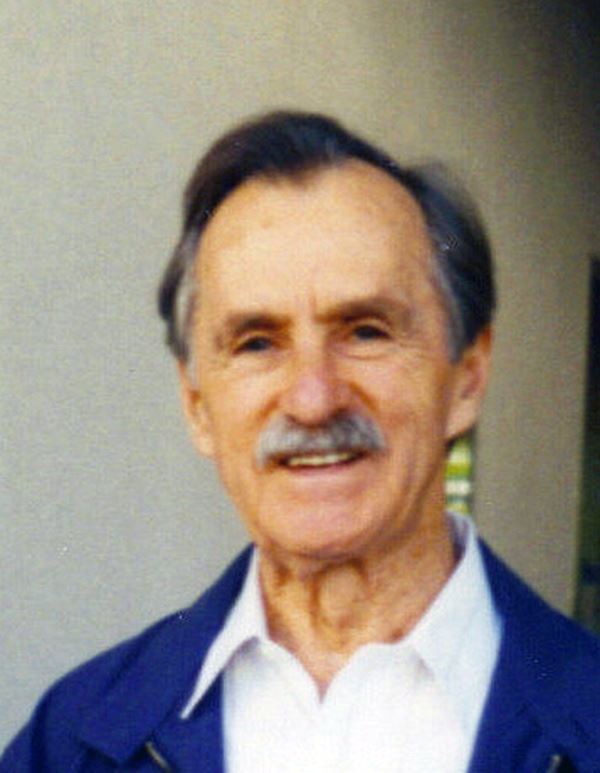 Melbourne (Mel) Carriker was born on Feb. 25, 1915, in Santa Marta, Columbia, South America, where he grew up on a coffee plantation. He moved to the United States with his parents in 1927, and served in the U.S. Navy in the South Pacific during World War II.
Melbourne (Mel) Carriker was born on Feb. 25, 1915, in Santa Marta, Columbia, South America, where he grew up on a coffee plantation. He moved to the United States with his parents in 1927, and served in the U.S. Navy in the South Pacific during World War II.
Carriker developed an interest in zoological research at an early age (his father was a naturalist) and graduated with honors from Rutgers University. He received his PhD from the University of Wisconsin. After serving as assistant professor of zoology at Rutgers University and associate professor of zoology at the University of North Carolina, he became director of the Systematics Ecology Program, Marine Biology Laboratory at Woods Hole, MA. In 1973, he was appointed professor of Marine Studies at the newly-founded College of Marine Studies. He was the world’s foremost expert on the oyster drill, and he also studied the ecology of the hard clam. He did pioneering work on shellfish physiology, determining that mollusks daily accumulate alternating growth layers of carbonate shell material and organic conchiolin. Even after he stopped teaching, students visited his office to talk and to see his many collections of shells and fossils.
He wrote colorful descriptions of his life and the results of his scientific research in three books and more than 100 scientific publications. Carriker said he was always learning something new, which kept him young. He wrote for years by hand, then learned to use an electric typewriter, and at age 90 took computer classes so he could get his ideas published more quickly. Beyond the ocean and marine studies, the true love of his life was his wife, Meriel R. “Scottie” Carriker. After 63 years of marriage, and a life together all over the world, his eyes twinkled when he talked about their plans for the future.
Carriker served as official historian and president of the National Shellfisheries Association and president of the Delaware Chapter of Partners of the Americas. He was president of AERS in 1961, and a recipient of the Venerable Clam.
Chestnut, Alphonse F. (deceased, 4/18/2001)
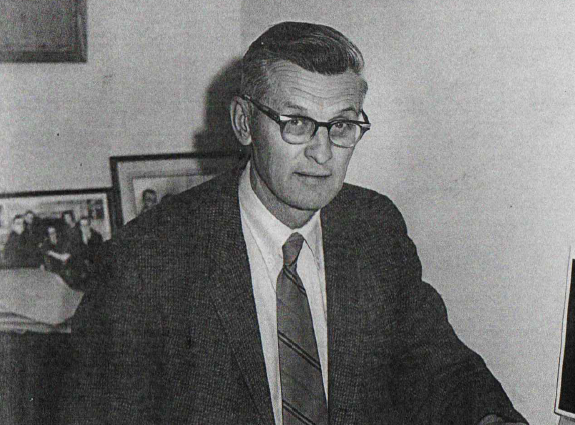 A.F. (Al) Chestnut was born in Stoughton, MA in 1917. He graduated from the College of William and Mary, where he played football and basketball, which led to his later induction into the Athletic Hall of Fame. He remained there after graduation to coach freshman football, but soon received the offer of a graduate assistantship at Rutgers, where he received his MS and PhD in zoology. He became director of the Rutgers oyster lab, and then director of the Institute of Marine Sciences in Morehead City from 1955-1980. During this time he served as professor of Zoology in Marine Sciences at University of North Carolina. He served North Carolina on its Marine Fisheries Commission until 1985 and its Marine Science Council until 1989. He was active in regional fisheries management as well, serving for an extended period on the Atlantic States Marine Fisheries Commission and on the South Atlantic Fisheries Management Council.
A.F. (Al) Chestnut was born in Stoughton, MA in 1917. He graduated from the College of William and Mary, where he played football and basketball, which led to his later induction into the Athletic Hall of Fame. He remained there after graduation to coach freshman football, but soon received the offer of a graduate assistantship at Rutgers, where he received his MS and PhD in zoology. He became director of the Rutgers oyster lab, and then director of the Institute of Marine Sciences in Morehead City from 1955-1980. During this time he served as professor of Zoology in Marine Sciences at University of North Carolina. He served North Carolina on its Marine Fisheries Commission until 1985 and its Marine Science Council until 1989. He was active in regional fisheries management as well, serving for an extended period on the Atlantic States Marine Fisheries Commission and on the South Atlantic Fisheries Management Council.
Dr. Chestnut’s son Al describes him as quiet, humble, and one of the “greatest generation” – those who tirelessly served family, community, and vocation. He married Janet Wood soon after college, and they had three sons and five grandchildren. He was a devout Christian who became known throughout Carteret County, NC, for his warmth, his contributions to civic life, and his ability to bring together disparate interests, from sports and commercial fisheries, scientists, and governmental fisheries managers. He also served as the Carteret County School Board Chair.
Chestnut served as president of the National Shellfisheries Association from 1953-1955, and on the Editorial Board of Chesapeake Science, 1960-61. He was host of the first AERS meeting in 1949 in Beaufort, NC, and a member of the AERS Board as Secretary-Treasurer from 1952-53. He was awarded Honorary Membership in 1981, and was a featured speaker at the AERS 50th Anniversary.
Costlow, John DeForest (deceased, 4/12/2009)
 John Costlow was born in Brooksville, Pa. He received his Ph.D. in zoology from Duke University in 1956. After a research trip to Scotland, he returned to Beaufort and became director of the Duke Lab in 1968, a position he held until 1989. During his tenure, the facility became a full-time research and teaching center.
John Costlow was born in Brooksville, Pa. He received his Ph.D. in zoology from Duke University in 1956. After a research trip to Scotland, he returned to Beaufort and became director of the Duke Lab in 1968, a position he held until 1989. During his tenure, the facility became a full-time research and teaching center.
His research focused on crustaceans, particularly the blue crab. He was the first scientist to culture the blue crab through its developmental stages in the laboratory. Costlow served on panels of the National Science Foundation, the Smithsonian Institution and the Office of Naval Research. He also shared his scientific knowledge with his community and state as a member or chair of a number of area and state boards and committees relating to marine and estuarine life, and even as mayor of Beaufort.
His commitment to community was recognized twice with the Order of the Long Leaf Pine award, the state’s highest service award, in 1998 for his work on coastal preservation and water quality management issues, and in 2008, when he and his wife Virginia were presented the award for their historic preservation efforts.
Costlow joined AERS in 1958, and served as president in 1962. During his year as president, AERS experienced growth in membership, growth in scientific expertise, and growth in regional focus. He oversaw an AERS self-evaluation that helped move the organization forward. At the AERS 50th anniversary celebration in 1998, he asked the membership to be ready for opportunity, to emulate the good (science) and to revere the powerful act of one person passing on knowledge to another.
Whether working for improved interracial community relations in Beaufort to bringing North Carolina’s estuaries into the National Estuarine Research Reserve System, Costlow’s impact is felt to this day.
Cronin, William (deceased, 6/21/2015)
 William Cronin was born in Aberdeen, MD on December 29, 1914. He earned a bachelor’s degree in chemistry from Washington College in 1940, and in 1947 became one of the founders of the Johns Hopkins Chesapeake Bay Institute. As staff oceanographer, he captained the Institute’s research vessels Lydia Louise I and II and Maury for over 30 years, collecting data on the Bay from its mouth to the Susquehanna River headwaters. He was a hydrographer with deep interest in the morphology and behavior of Chesapeake Bay. He published, long before serious mathematical models existed, tables of the Bay’s hydrography, its depths and volumes by segment, so that one could determine the volume of any tributary by reading the table entries.
William Cronin was born in Aberdeen, MD on December 29, 1914. He earned a bachelor’s degree in chemistry from Washington College in 1940, and in 1947 became one of the founders of the Johns Hopkins Chesapeake Bay Institute. As staff oceanographer, he captained the Institute’s research vessels Lydia Louise I and II and Maury for over 30 years, collecting data on the Bay from its mouth to the Susquehanna River headwaters. He was a hydrographer with deep interest in the morphology and behavior of Chesapeake Bay. He published, long before serious mathematical models existed, tables of the Bay’s hydrography, its depths and volumes by segment, so that one could determine the volume of any tributary by reading the table entries.
Cronin was a true student of the Bay in every way. Throughout his life, he gained a deep connection and knowledge of every aspect. He explored it in his 25-foot sailboat, became an expert on log canoes and other vessels, connected with watermen and bayshore residents, studied historical materials in libraries and museums, and photographed and collected documentation on the Bay’s islands, later to provide the basis for his book “The Disappearing Islands of the Chesapeake,” published in 2005. In his 90’s he began work on his second book, “Cities and Towns of the Chesapeake,” published in 2013. He was also an accomplished model builder, and his motorized replica of a 19th C Columbia steam engine that was recovered from a shipwreck on the floor of the Potomac River is housed in the Calvert Marine Museum.
Cronin served AERS as President in 1972.
 Ford “Bud” Cross, a member of AERS since 1967, was born in Warren, Ohio in 1940. He graduated in 1962 with a major in Biology from Mount Union College in Alliance, Ohio. He attended Oregon State University where he earned a M.S. (1964) and Ph.D. (1968) in Biological Oceanography. Cross became employed by NOAA’s Beaufort Laboratory in Beaufort N.C. in 1967, where he worked for 33 years, retiring in 2000. During that time, he conducted research on trace metal/marine food web dynamics, served as Chief of the Ecology Division for 10 years, and Laboratory Director for 15 years. Cross authored or co-authored a number of research or review papers on trace metals in marine fish, fishing-related mortalities on sea turtles, and fish/coastal habitat interactions. As laboratory director, he was responsible for overseeing research on a variety of programs, including coastal fisheries ecology, reef fish and menhaden population dynamics, sea turtle and marine mammal research and the ecology and restoration of seagrasses.
Ford “Bud” Cross, a member of AERS since 1967, was born in Warren, Ohio in 1940. He graduated in 1962 with a major in Biology from Mount Union College in Alliance, Ohio. He attended Oregon State University where he earned a M.S. (1964) and Ph.D. (1968) in Biological Oceanography. Cross became employed by NOAA’s Beaufort Laboratory in Beaufort N.C. in 1967, where he worked for 33 years, retiring in 2000. During that time, he conducted research on trace metal/marine food web dynamics, served as Chief of the Ecology Division for 10 years, and Laboratory Director for 15 years. Cross authored or co-authored a number of research or review papers on trace metals in marine fish, fishing-related mortalities on sea turtles, and fish/coastal habitat interactions. As laboratory director, he was responsible for overseeing research on a variety of programs, including coastal fisheries ecology, reef fish and menhaden population dynamics, sea turtle and marine mammal research and the ecology and restoration of seagrasses.
Cross also was involved in the development of NOAA’s Coastal Change Analysis Program (C-CAP) that now quantifies U.S. coastal land use change routinely. During the last two years of his career, he helped establish a research program in NOAA’s National Ocean Service.
He was awarded the NOAA Bronze Medal in 1996 for leadership in developing nationally significant innovative approaches to coastal resource research and management.
Since retirement, he has served as scientific advisor for a non-profit organization that produced documentary films on marine topics, and continued his research on trace metal dynamics in marine fish. He and his wife, Patricia, now reside in Morehead City, N.C.
 Dan Dauer is Professor and Eminent Scholar Emeritus of Biological Sciences at Old Dominion University. He received his B.S. in Biology in 1970 from Old Dominion University, and his Ph.D. in Biology in 1974 from the University of South Florida. He is a Marine and Estuarine Benthic Ecologist, specializing in the study of polychaetes.
Dan Dauer is Professor and Eminent Scholar Emeritus of Biological Sciences at Old Dominion University. He received his B.S. in Biology in 1970 from Old Dominion University, and his Ph.D. in Biology in 1974 from the University of South Florida. He is a Marine and Estuarine Benthic Ecologist, specializing in the study of polychaetes.
Dauer has served as Principal Investigator for Virginia's Chesapeake Bay Monitoring Program, Director of the Benthic Ecology Laboratory, Associate Director of the Applied Marine Laboratory, President of the International Polychaetology Association, and Chair of the ODU Department of Biological Sciences.
Dauer supervised 169 grants and contracts during his 41 years at Old Dominion University. Total funding of these awards was over $28 million. He served as the Major Professor for over 35 master's students and three doctoral students.
Dauer, a recipient of the Venerable Clam, served AERS as Member of the Executive Committee for several years, chair of the Nominations Committee, and host for two different meetings. He also served as Secretary of ERF from 2005-2007 and a member of the organizing committee for the 18th Biennial ERF Conference in 2005.
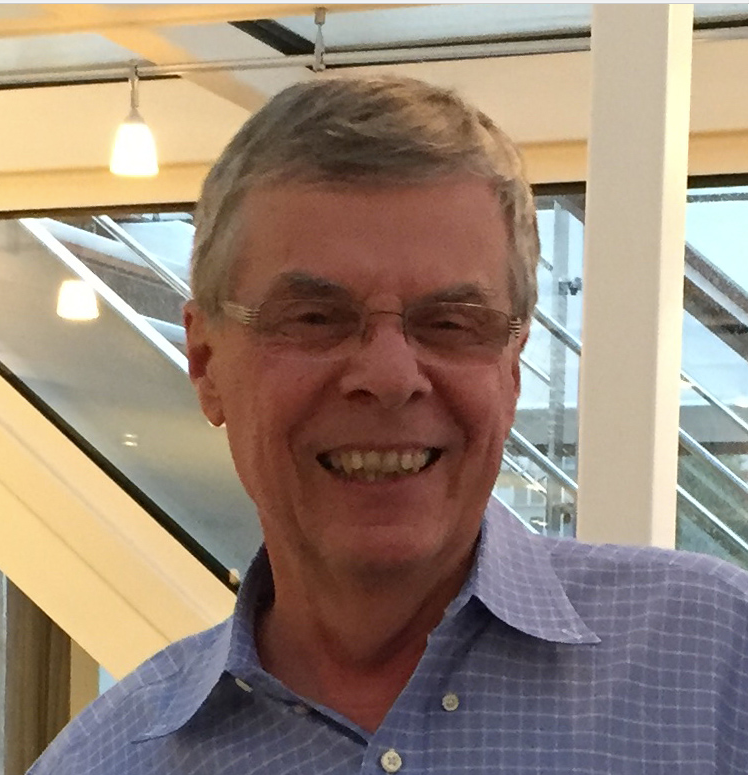 Robert Diaz is a Professor Emeritus at the Virginia Institute of Marine Science, College of William and Mary. He received a Ph.D. from the University of Virginia in marine science in 1978 and a Doctor Honoris Causa from Gothenburg University, Sweden, for his contributions to marine and estuarine ecology in 1996. In 2011 he was named Virginia Outstanding Scientist of the year.
Robert Diaz is a Professor Emeritus at the Virginia Institute of Marine Science, College of William and Mary. He received a Ph.D. from the University of Virginia in marine science in 1978 and a Doctor Honoris Causa from Gothenburg University, Sweden, for his contributions to marine and estuarine ecology in 1996. In 2011 he was named Virginia Outstanding Scientist of the year.
Diaz has worked on environmental issues in marine and freshwater habitats around the globe from the intertidal to the deep-sea. He has served on science advisory and review committees for private foundations, state and federal agencies, and international organizations. He specializes in documenting the effects of both natural and human disturbance to ecosystems, and is an internationally recognized expert on animal-sediment-interactions, the effect of eutrophication (over-enrichment of the seas) and hypoxia (low dissolved oxygen dead zones) on ecosystem services and functions.
Diaz was active in both AERS and ERF (CERF). He was AERS President from 1992 to 1994 and served on the CERF board as Member-at-Large.
Hargis, William Jennings Jr. (deceased, 10/17/08)
 William Hargis was born Nov. 24, 1923, in Russell County, VA. He received his BS and MS from the University of Richmond and his PhD from Florida State. He was an Emeritus Professor of Marine Science at the Virginia Institute of Marine Science (VIMS), and served as its Director from its founding in 1959 until 1981. He also directed VIMS' predecessor, the Virginia Fisheries Laboratory. During his 22 year tenure as Director, Dr. Hargis helped VIMS expand from a single building to a 40 acre campus with 11 laboratory and teaching buildings, a field laboratory on the Eastern Shore, and an international reputation. He also established the current connection between VIMS and The College of William and Mary, initiating doctoral and MS programs in marine science.
William Hargis was born Nov. 24, 1923, in Russell County, VA. He received his BS and MS from the University of Richmond and his PhD from Florida State. He was an Emeritus Professor of Marine Science at the Virginia Institute of Marine Science (VIMS), and served as its Director from its founding in 1959 until 1981. He also directed VIMS' predecessor, the Virginia Fisheries Laboratory. During his 22 year tenure as Director, Dr. Hargis helped VIMS expand from a single building to a 40 acre campus with 11 laboratory and teaching buildings, a field laboratory on the Eastern Shore, and an international reputation. He also established the current connection between VIMS and The College of William and Mary, initiating doctoral and MS programs in marine science.
Hargis' leadership placed VIMS in an advisory role to the Virginia Fisheries Commission, the State Water Control Board, the Virginia Department of Health, the General Assembly, and industry. International recognition for VIMS soon followed when institute scientists advised the U.S. State Department in fisheries negotiations with the Soviet Union, Poland and international treaty organizations. In 1971, President Nixon appointed Hargis vice chair of the new National Advisory Committee on Oceans and Atmosphere. President Ford later appointed him chair. He was appointed by the governor to serve on the Virginia Economic Development Task Force, Coastal Plains Commission, Mid-Atlantic Biological Task Force, and many other advisory bodies. Dr. Hargis was a consultant to the National Council on Marine Resources and Engineering Development, Office of the Vice President, and consultant to the oceanographer of the Navy.
Over 50 years, Hargis wrote more than 130 research publications, 22 essays and testimony statements to the U.S. Congress, and more than 40 reports and educational pieces on marine science, the environment, and resource management. He also edited, translated, or reviewed more than 500 scientific documents.
In 1971, Dr. Hargis received the Neptune Award from the American Oceanic Organization for his leadership, efforts and accomplishments in focusing the nation's attention on the coastal zone environment. He was awarded the Mathias Medal in 1997 for contributions in Marine Science for Policy and Education, the Thomas Jefferson Medal in 2003 for Outstanding Contributions to Natural Science, the 2003 Virginia Life Achievement in Science Award, the National Wildlife Federation Special Conservation Award, and many others. In April of 2004, the Virginia General Assembly approved House Bill 1313 that named the library at VIMS the William Jennings Hargis, Jr., Library.
Hargis was very proud of his service during World War II. He served as a B29 pilot in the Pacific theater for the Army Air Corps. He was an avid sailor and a diligent historian of the Bay and James River.
Although he “retired” in 1981, as Professor Emeritus Hargis continued to study pressing questions related to the Bay that he loved, including investigating the role of oyster reefs, and to unofficially advise VIMS graduate students, who found him an encouraging listener and an endless source of inspiration.
Hargis served as AERS president in 1963, and was awarded the Venerable Clam.
Haven, Dexter Stearns (deceased 3/12/2011)
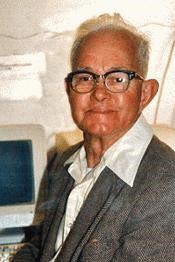 Dexter Haven was born in Lake Forest, Ill. He graduated from the University of Rhode Island (then Rhode Island State College) in 1942. He joined the U.S. Army Air Corps and served with the 9th Weather Squadron from 1942 to 1946. He received his MS from URI and began work with the U.S. Fish and Wildlife Service in 1948. In 1949, he joined the staff of the Virginia Fisheries Laboratory (later Virginia Institute of Marine Science) of the College of William and Mary, where he became a senior Marine Scientist. He was a member of the faculty at the University of Virginia and the College of William and Mary, serving as Chair of the Department of Applied Biology and Professor of Marine Science in the School of Marine Science. He retired in 1984, as a Professor Emeritus, from the College of William and Mary.
Dexter Haven was born in Lake Forest, Ill. He graduated from the University of Rhode Island (then Rhode Island State College) in 1942. He joined the U.S. Army Air Corps and served with the 9th Weather Squadron from 1942 to 1946. He received his MS from URI and began work with the U.S. Fish and Wildlife Service in 1948. In 1949, he joined the staff of the Virginia Fisheries Laboratory (later Virginia Institute of Marine Science) of the College of William and Mary, where he became a senior Marine Scientist. He was a member of the faculty at the University of Virginia and the College of William and Mary, serving as Chair of the Department of Applied Biology and Professor of Marine Science in the School of Marine Science. He retired in 1984, as a Professor Emeritus, from the College of William and Mary.
Haven published 151 advisory reports and journal articles during his career, and was a pioneer in the study of oysters and other shellfish in Chesapeake Bay. His seminal 1978 report, "The oyster industry of Virginia: its status, problems, and promise," was instrumental in the development of Virginia’s Chesapeake and Tributaries regulations adopted in 1984 and its efforts in Bay management under the federal Chesapeake Bay Act of 1983.
Haven served as president of The National Shellfisheries Association and received the David H. Wallace Award and the Honored Life Member Award from the Association for his contributions to shellfish science. He was responsible for remapping Virginia's public oyster grounds, and his survey, named after their original surveyor, Lt. James Bowen Baylor, still has a significant role in efforts to restore Virginia's oyster industry. Haven also helped establish the VIMS oyster spat-fall survey, to track recruitment trends of oysters in the lower Chesapeake.
Haven, like so many of his “greatest generation,” was often described as a gentleman and as someone who worked across the spectrum of government, industry, and individual working oyster harvesters, respected by all. The statement by a waterman at a Virginia Marine Resources Commission/General Assembly hearing is almost incredible today: “I don't like the things Dexter Haven said, because it's going to hurt my pocketbook, but I know Dexter has my best interests in mind, and is doing what he thinks is right. I believe that his data are good, and in what he's trying to do, even though I think it's going to hurt me in the short term."
In retirement, he enjoyed fishing, was an avid gardener, and traveled throughout the world.
Haven was an early recipient of the AERS Venerable Clam.
 Chris Heyer received his BS in Marine Science and Biology from Southampton College and followed that with a master’s in Fisheries Science in the MEES program at the University of Maryland. In Maryland he is widely known and appreciated for early efforts co-developing the Eyes on the Bay data portal at Maryland Department of Natural Resources, a resource that many AERS members take advantage of today to find quality water quality data from the Chesapeake and Coastal Bays. He then began a career with YSI, where he was always a trusted sales representative as a fellow estuarine scientist who understood the applications of sensor technology. Since his days at YSI he moved on to work with Xylem, and now works at Aquatic Informatics, a software company geared towards aquatic datasets. He has had an outstanding impact on AERS, with generous sponsorship of meetings and substantial concrete support in website development and listservs.
Chris Heyer received his BS in Marine Science and Biology from Southampton College and followed that with a master’s in Fisheries Science in the MEES program at the University of Maryland. In Maryland he is widely known and appreciated for early efforts co-developing the Eyes on the Bay data portal at Maryland Department of Natural Resources, a resource that many AERS members take advantage of today to find quality water quality data from the Chesapeake and Coastal Bays. He then began a career with YSI, where he was always a trusted sales representative as a fellow estuarine scientist who understood the applications of sensor technology. Since his days at YSI he moved on to work with Xylem, and now works at Aquatic Informatics, a software company geared towards aquatic datasets. He has had an outstanding impact on AERS, with generous sponsorship of meetings and substantial concrete support in website development and listservs.
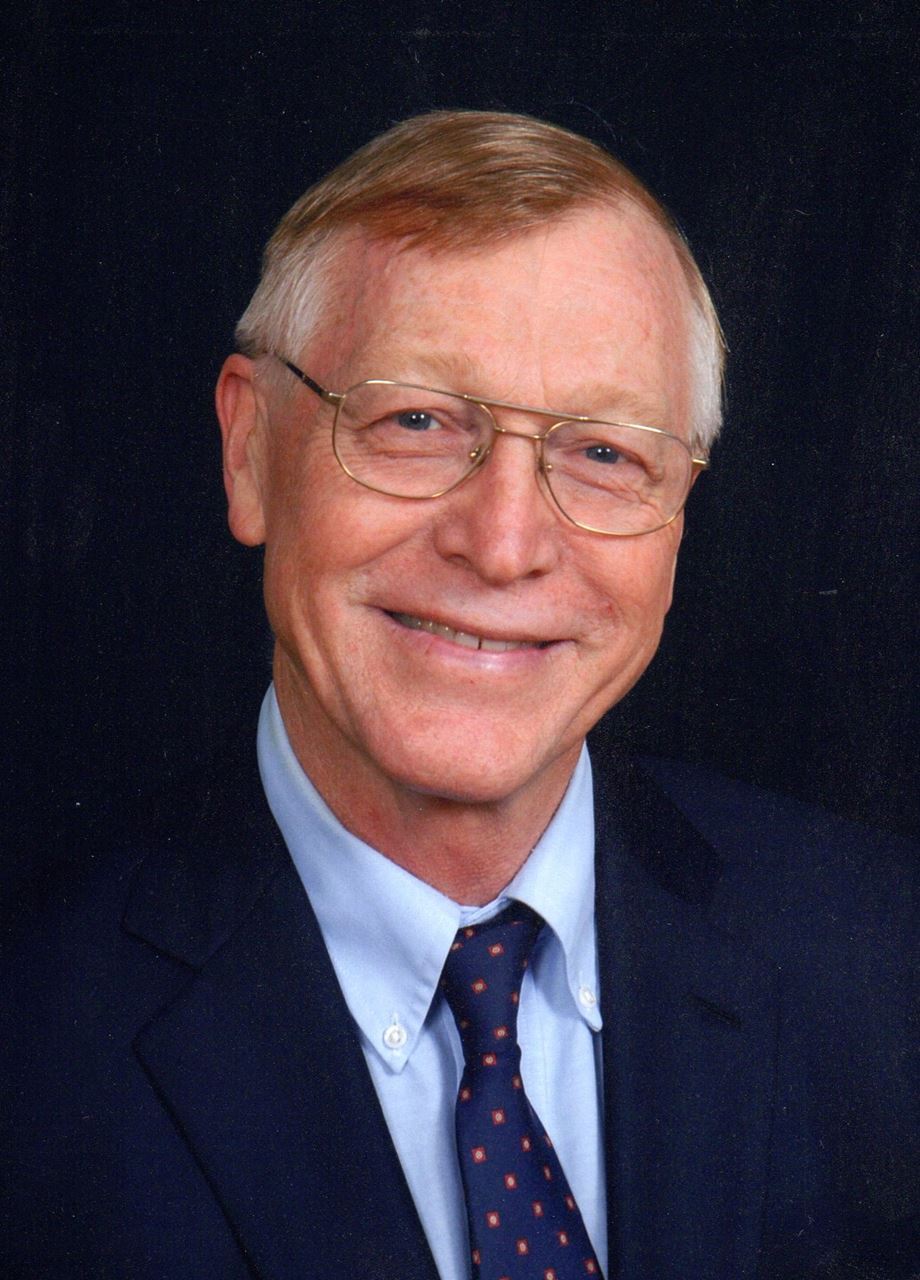 R. Christian Jones is Professor of Environmental Science and Policy and Director of the Potomac Environmental Research and Education Center at George Mason University. Trained as an algal ecologist, he has directed ecosystem level research into water quality and biological communities of the tidal Potomac River with particular emphasis on Gunston Cove which has been one of the longest continuously monitored ecosystems in the Chesapeake Bay area.
R. Christian Jones is Professor of Environmental Science and Policy and Director of the Potomac Environmental Research and Education Center at George Mason University. Trained as an algal ecologist, he has directed ecosystem level research into water quality and biological communities of the tidal Potomac River with particular emphasis on Gunston Cove which has been one of the longest continuously monitored ecosystems in the Chesapeake Bay area.
Jones received his Ph.D. in Botany at the University of Wisconsin-Madison following a BA at Rice University and MA at Vanderbilt University.
He founded the Environmental Science and Policy Department at George Mason University in 2000 and the Potomac Environmental Research and Education Center in 2007. Jones served as Endowment Chair of AERS for 6 years in the 1990’s.
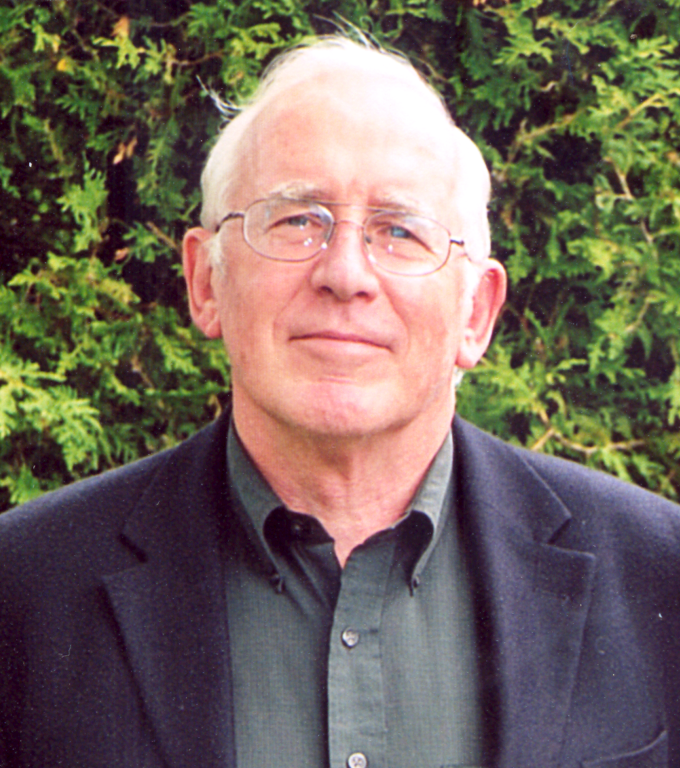 Vic Kennedy is a Professor Emeritus at the University of Maryland Center for Environmental Science. His expertise and interests include historical fisheries and the ecology of bivalves, crabs, fish, and benthic communities, as well as global climate change. He is currently affiliated with the Chesapeake Biological Laboratory.
Vic Kennedy is a Professor Emeritus at the University of Maryland Center for Environmental Science. His expertise and interests include historical fisheries and the ecology of bivalves, crabs, fish, and benthic communities, as well as global climate change. He is currently affiliated with the Chesapeake Biological Laboratory.
Kennedy received his PhD from the University of Rhode Island, and was a post-doc at the University of Canterbury, New Zealand and the Dept. of Fisheries and Oceans, Newfoundland, Canada. Most of his career was at the Horn Point Laboratory of UMCES, where, in addition to his research, teaching, and mentoring students, he has been a prolific writer, with an extensive record of refereed journal publications, book chapters, and major review volumes (eastern oyster, blue crab, diamond-backed terrapin).
Kennedy was very active in both AERS and ERF (CERF). He served the AERS board as a Member-at-Large, then as President from 1984-86, received the Venerable Clam in Fall 2004, and was also an ERF board member and on several committees. He was equally important to the National Shellfisheries Association, where he was a Member-at-Large, President from 1990-1991, and designated an Honored Life Member in 1995.
 AJ Lippson graduated from the Department of Medical Illustration at the Johns Hopkins University Medical School in 1954, and was immediately employed by Chesapeake Biological Lab working on early development stages of Chesapeake Bay fishes. That same year, she married Romeo Mansueti. Romeo died in 1963 and she remained at CBL until 1971 when she moved to Easton and married Bob Lippson. She continued to work on finalization of “Chesapeake Bay in Maryland: an Atlas of Natural Resources” (1973). She joined Martin Marietta Laboratory in Catonsville in 1942, working with a project to monitor scientific studies for the Power Plant Siting Program, where she produced “The Environmental Atlas of the Potomac River Estuary.” She left in 1976 to start her own consulting company, and began the first edition of Life in the Chesapeake Bay with Bob Lippson, now soon to be in its fourth edition, as well as “Life along the Inner Coast,” published by the University of North Carolina. After Bob retired from the NMFS they had a boat built and ran Chesapeake Nature Cruises anchored at Chesapeake Maritime Museum for 5 years. Her whole career has been to use whatever talents she had to disseminate scientific knowledge to the public.
AJ Lippson graduated from the Department of Medical Illustration at the Johns Hopkins University Medical School in 1954, and was immediately employed by Chesapeake Biological Lab working on early development stages of Chesapeake Bay fishes. That same year, she married Romeo Mansueti. Romeo died in 1963 and she remained at CBL until 1971 when she moved to Easton and married Bob Lippson. She continued to work on finalization of “Chesapeake Bay in Maryland: an Atlas of Natural Resources” (1973). She joined Martin Marietta Laboratory in Catonsville in 1942, working with a project to monitor scientific studies for the Power Plant Siting Program, where she produced “The Environmental Atlas of the Potomac River Estuary.” She left in 1976 to start her own consulting company, and began the first edition of Life in the Chesapeake Bay with Bob Lippson, now soon to be in its fourth edition, as well as “Life along the Inner Coast,” published by the University of North Carolina. After Bob retired from the NMFS they had a boat built and ran Chesapeake Nature Cruises anchored at Chesapeake Maritime Museum for 5 years. Her whole career has been to use whatever talents she had to disseminate scientific knowledge to the public.
Lippson served as AERS president in 1976, and was awarded the Venerable Clam.
McDermott, John (deceased 10/4/2017)
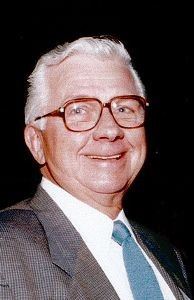 John McDermott received his MS and PhD in Biology from Rutgers University. At the time of his death, he was the B. F. Fackenthal Jr. Professor of Biology Emeritus at Franklin & Marshall College, where he taught and conducted research from 1958 to 1996. He was Chair of the Biology Department from 1962 to 1973, and also a visiting professor at the University of Miami Marine Lab, Virginia Institute of Marine Science (University of Virginia and William and Mary), and Duke Marine Lab. McDermott’s research focused on marine host-parasite relationships, hermit crab biology, and the exotic crab Hemigrapsus sanguineus. He traveled extensively, and conducted marine research in Bermuda, Denmark, Wales and South Africa. He was a Fulbright Scholar Research Award recipient, and published in Science and in numerous other scientific journals.
John McDermott received his MS and PhD in Biology from Rutgers University. At the time of his death, he was the B. F. Fackenthal Jr. Professor of Biology Emeritus at Franklin & Marshall College, where he taught and conducted research from 1958 to 1996. He was Chair of the Biology Department from 1962 to 1973, and also a visiting professor at the University of Miami Marine Lab, Virginia Institute of Marine Science (University of Virginia and William and Mary), and Duke Marine Lab. McDermott’s research focused on marine host-parasite relationships, hermit crab biology, and the exotic crab Hemigrapsus sanguineus. He traveled extensively, and conducted marine research in Bermuda, Denmark, Wales and South Africa. He was a Fulbright Scholar Research Award recipient, and published in Science and in numerous other scientific journals.
McDermott served in the US Navy in World War II, on the destroyers USS Pritchett and Bradford. A true naturalist, he loved the ocean and beach, spending many hours at his home on the Jersey shore. His friendly, yet gentlemanly demeanor graced many AERS meetings, and he was an esteemed recipient of the Venerable Clam.
McHugh, John L. (deceased 8/20/1999)
John Laurence McHugh was born on Nov. 24, 1911, in Vancouver, British Columbia. He received a BS and MS from the University of British Columbia and his PhD from Scripps Institute of Oceanography. He served in World War II with the Canadian Scottish Regiment and the Queen's Cameron Highlanders.
Dr. McHugh served as director of the Virginia Fisheries Laboratory in Gloucester Point, Va., and a professor of marine biology at the College of William and Mary. From 1959 to 1970, he was chief of biological research at the Federal Bureau of Commercial Fisheries. From 1970 to 1984, he was a professor of marine resources at the State University of New York at Stony Brook. He was also a member of the International Whaling Commission.
Mihursky, Joseph (deceased 8/24/2018)
 Joseph Mihursky received a BS in Biology from Lafayette College (1954), an MS in Microbiology from Lehigh University (1957) and a PhD in Zoology/Ecology (1962), also from Lehigh University. In 1962, Mihursky joined the staff at Chesapeake Biological Laboratory (CBL), and soon became Scientist-in-Charge of its Hallowing Point Field Station, where he assembled teams of skilled researchers needed to address complex environmental problems. Mihursky and scientists from CBL, US Geological Service, American University, Hood College, Lehigh University and other institutions became national leaders in studying and understanding the effects of electric power generation, testing ideas and quantifying environmental impacts with studies conducted on the Potomac and Patuxent Rivers and Chesapeake Bay. His work led to Maryland legislation protecting these ecosystems by controlling the amount of heat a power plant could discharge into estuarine waters. Mihursky and his research teams published over 200 scientific journal articles, book chapters, conference proceedings and technical reports.
Joseph Mihursky received a BS in Biology from Lafayette College (1954), an MS in Microbiology from Lehigh University (1957) and a PhD in Zoology/Ecology (1962), also from Lehigh University. In 1962, Mihursky joined the staff at Chesapeake Biological Laboratory (CBL), and soon became Scientist-in-Charge of its Hallowing Point Field Station, where he assembled teams of skilled researchers needed to address complex environmental problems. Mihursky and scientists from CBL, US Geological Service, American University, Hood College, Lehigh University and other institutions became national leaders in studying and understanding the effects of electric power generation, testing ideas and quantifying environmental impacts with studies conducted on the Potomac and Patuxent Rivers and Chesapeake Bay. His work led to Maryland legislation protecting these ecosystems by controlling the amount of heat a power plant could discharge into estuarine waters. Mihursky and his research teams published over 200 scientific journal articles, book chapters, conference proceedings and technical reports.
While on sabbatical leave from CBL, Mihursky worked in the office of US Senator Mac Mathias of Maryland, where he played a role in developing and sustaining the Local-State-Federal EPA Chesapeake Bay Program partnership. The strong connections between State and Federal environmental management agencies had their earliest development during Mihursky’s active years. Mihursky served as interim head of the Chesapeake Biological Laboratory from 1975-1976 and from 1982-1983. Following this administrative activity, Mihursky became the Director of the Chesapeake Research Consortium (CRC, where he provided valuable service in integrating and organizing these institutions to tackle large and complex environmental problems around the Bay and surrounding watershed.
Mihursky was deeply involved with the education of graduate and post-doctoral students and staff at CBL and the University of Maryland throughout his long career. He was also dedicated to educating politicians and environmental leaders on Chesapeake Bay issues from microbes to striped bass to land use. His effectiveness came in part from his relaxed manner; he organized, sponsored, and coached a softball team from CBL that led to connections with local politician Bernie Fowler, who was passionate about cleaning up the Patuxent River. Because of the willingness of Mihursky, Don Heinle, and others to communicate with Fowler, major progress began on management of the Patuxent River and Chesapeake Bay ecosystems.
Mihursky served as AERS president in 1974, and he fully retired from CBL and the University of Maryland in 2002. He died at his home on the cliffs overlooking the Chesapeake Bay he loved so dearly.
Marshall, Nelson (deceased, 3/25/09)
 Nelson Marshall received his PhD at the University of Florida in 1941 and had an active career at multiple institutions, chronicled in his book "In the Wake of a Great Yankee Oceanographer.” He was the first director of the Virginia Fisheries Laboratory, which would later become the Virginia Institute of Marine Science. He was also Professor of Oceanography and Marine Affairs at the University of Rhode Island.
Nelson Marshall received his PhD at the University of Florida in 1941 and had an active career at multiple institutions, chronicled in his book "In the Wake of a Great Yankee Oceanographer.” He was the first director of the Virginia Fisheries Laboratory, which would later become the Virginia Institute of Marine Science. He was also Professor of Oceanography and Marine Affairs at the University of Rhode Island.
Marshall remained actively involved in oceanography after retirement, first at Horn Point Laboratory, University of Maryland Center for Environmental Science and then at Oregon State University. He authored a number of books; his final book was "Oceanography: An Observer's Guide."
Marshall was important to AERS from the beginning. He, Willard Van Engle, and Eugene Cronin met in 1948 and conceived of a society to bring estuarine scientists together around their research. Marshall was a charter member of AERS, helped to write the first draft of its constitution and by-laws, received the Venerable Clam in 1998, and provided the organization with exceptional inspiration and dedication for 61 years.
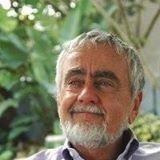 Kent Mountford received his BS, MS, and PhD from Rutgers University. He served as Senior Scientist for the U.S. Environmental Protection Agency, and he began working with the EPA’s Chesapeake Bay Program at its inception in 1984 studying plankton systems. He served on the Chesapeake Bay Program’s management committee and was influential in the inclusion of the District of Columbia as a partner in this restoration program. He was awarded the EPA’s Regional Bronze Medal for his work in developing "Environmental Indicators."
Kent Mountford received his BS, MS, and PhD from Rutgers University. He served as Senior Scientist for the U.S. Environmental Protection Agency, and he began working with the EPA’s Chesapeake Bay Program at its inception in 1984 studying plankton systems. He served on the Chesapeake Bay Program’s management committee and was influential in the inclusion of the District of Columbia as a partner in this restoration program. He was awarded the EPA’s Regional Bronze Medal for his work in developing "Environmental Indicators."
Mountford is well-known for his engaging and humorous presentations at AERS meetings, focused on Chesapeake Bay environmental history and other broad perspective topics. He also served as Historian on the Board of AERS, and was a recipient of the Venerable Clam.
Ever an engaging writer and lecturer, in 1997 he began his "Past as Prologue" column in the Alliance for Chesapeake Bay’s Bay Journal, which continued for many years. He is also an experienced sailor and a licensed U.S. Coast Guard captain.
 Nancy Mountford began her career, as she describes it, as a “cockroach brain surgeon”, a lab assistantship necessary as part of working her way through college. She “pithed” cockroaches for a research professor who was examining their autonomic nervous systems. She upgraded to sorting benthic invertebrate samples for Dr. Bob Loveland at Rutgers in 1969, on the Barnegat Nuclear Reactor Project where she met Kent Mountford. Living in Maryland by 1971, she met Dr. Joe Mihursky and joined the Hallowing Point Field Station (part of Chesapeake Biological Labs) also in benthic ecology. She was with CBL for 8 years as a Senior Faculty Research Assistant, while Gene Cronin was Director.
Nancy Mountford began her career, as she describes it, as a “cockroach brain surgeon”, a lab assistantship necessary as part of working her way through college. She “pithed” cockroaches for a research professor who was examining their autonomic nervous systems. She upgraded to sorting benthic invertebrate samples for Dr. Bob Loveland at Rutgers in 1969, on the Barnegat Nuclear Reactor Project where she met Kent Mountford. Living in Maryland by 1971, she met Dr. Joe Mihursky and joined the Hallowing Point Field Station (part of Chesapeake Biological Labs) also in benthic ecology. She was with CBL for 8 years as a Senior Faculty Research Assistant, while Gene Cronin was Director.
She started Cove Corporation, an environmental services company, in 1980. Cove Corporation provides benthic sorting and identification services for impacting ocean, estuary and freshwater clients worldwide. Nancy is a past President of AERS (1980) and a member since 1972.
While at Rutgers, the University greenhouse manager gave her some orchids being discarded and this began her love affair with this most diverse group of plant species. She has her own greenhouse and laboratory for breeding and propagating these exotic plants as hybrids. She is now an Accredited American Orchid Society Judge and a founding Vice President of Orchids Dominicana (in Santo Domingo, Dominican Republic), where over 2 million orchid plants are serviced and marketed.
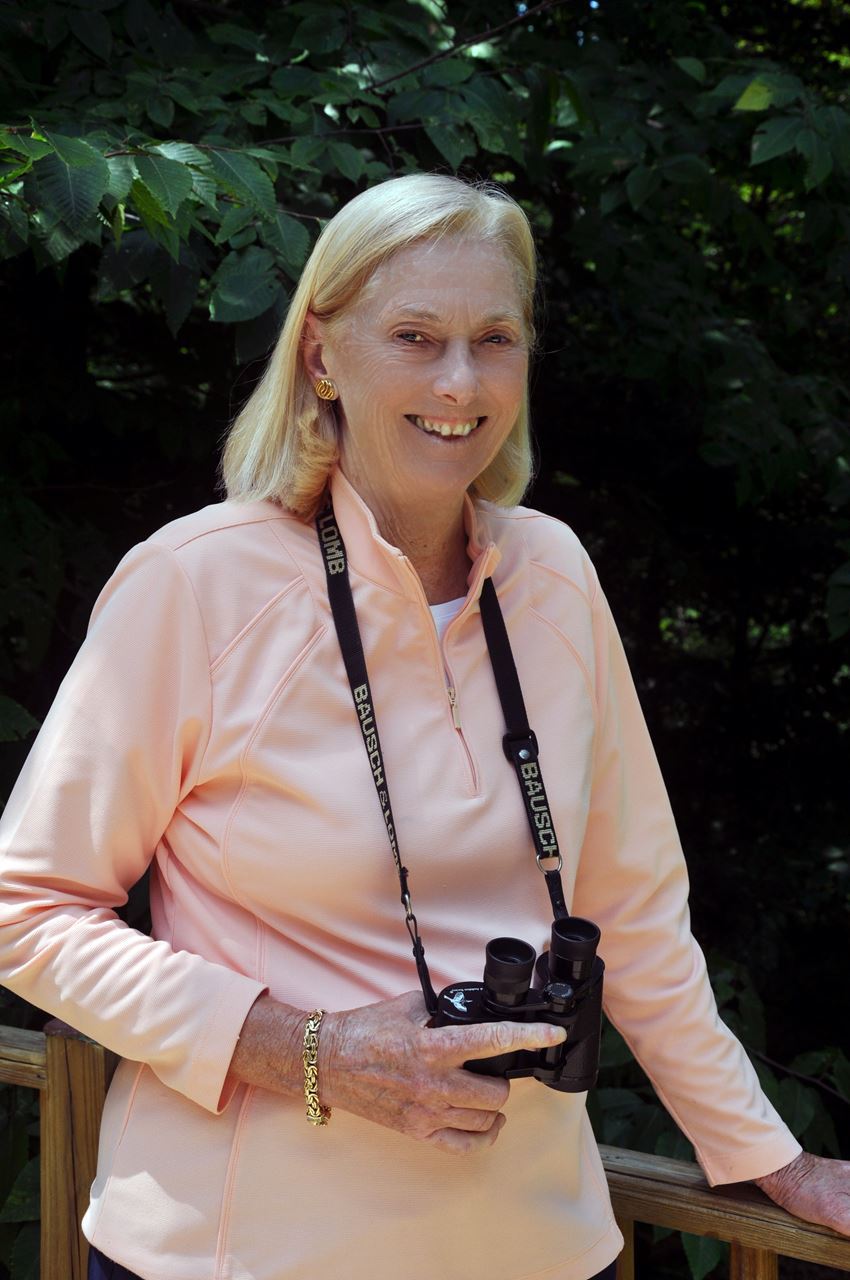 Marria O’Malley was born in Tamaqua, Schuylkill County, PA. She received a BS degree from Marywood University in Scranton and an MS from Adelphi University.
Marria O’Malley was born in Tamaqua, Schuylkill County, PA. She received a BS degree from Marywood University in Scranton and an MS from Adelphi University.
She was a career employee with the EPA for 38 years until she retired in 2008. Her duties with EPA varied over time but included serving as Chief Scientist for many Ocean Surveys monitoring ocean disposal sites and coastal eutrophication of near-coastal waters in Region 3. A major accomplishment was that she was instrumental in starting the Delaware Estuary Program (now the Partnership for the Delaware Estuary) and the Delaware Inland Bays Program (now the Delaware Center for the Inland Bays) in the late 1980s for EPA Region 3.
O’Malley-Walsh was active in AERS for many years. She was Secretary/Treasurer in 1975 and President from 1986 to 1988, and was awarded the Venerable Clam in 2008. While President, she instituted the Endowment Fund for funding student travel to meetings. She became an Honorary Member in 2001. Since retirement to Pennsylvania, she has traveled on many birding trips in North and Central America.
Patrick, Ruth (deceased 9/23/13)
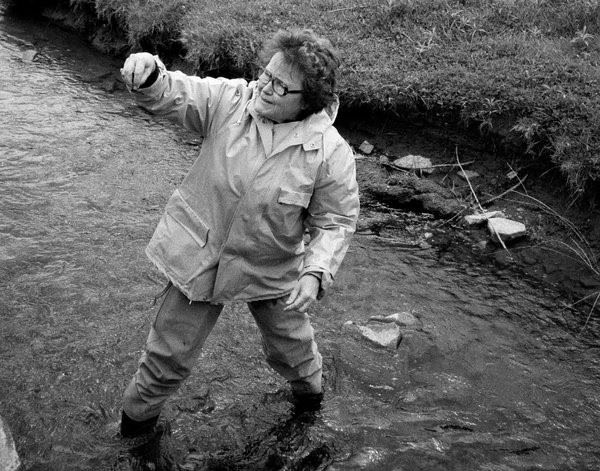 Ruth Patrick was born in Topeka, KS on Nov. 26, 1907. Her obituary in the New York Times was both a testament to her international renown and her personal challenges and triumphs as a pioneering female scientist, describing how her father shared his interest in natural science and encouraged hers from a young age. Most telling is the notation that she “resisted her mother’s wishes that she marry and learn the social graces and decided to study botany instead.“ She graduated from Coker College 1929 and received her MS and PhD in botany from the University of Virginia (1934).
Ruth Patrick was born in Topeka, KS on Nov. 26, 1907. Her obituary in the New York Times was both a testament to her international renown and her personal challenges and triumphs as a pioneering female scientist, describing how her father shared his interest in natural science and encouraged hers from a young age. Most telling is the notation that she “resisted her mother’s wishes that she marry and learn the social graces and decided to study botany instead.“ She graduated from Coker College 1929 and received her MS and PhD in botany from the University of Virginia (1934).
Her interest in diatoms led her to an association with the Academy of Natural Sciences in Philadelphia, which had the best collection of diatoms in America, while still a graduate student, and in 1937, she took an unpaid position as an assistant curator of microscopy there. This led to an association with the Academy of over 70 years, as she established its limnology department, now the Patrick Center for Environmental Research, became its chair until 1973, and was named to the Francis Boyer chair of limnology. She chaired the Academy’s board from 1973 to 1976.
Patrick was on the faculty of the University of Pennsylvania for more than 35 years, published over 200 scientific articles and was author or co-author of a number of books, including “Diatoms of the United States,” “Groundwater Contamination in the United States” and “Rivers of the United States.” Patrick’s study of freshwater streams and rivers became the basis for modern pollution control efforts. After careful study of diatom communities in polluted waterways, she developed the idea that community diversity was reflective of stream ecosystem health, which was later termed the “Patrick Principle” by noted conservation biologist Thomas Lovejoy and accepted as a key concept in ecosystems and in environmental science as a whole. Edward O. Wilson has called Dr. Patrick the foremost authority on America’s river systems and “a pioneer environmental activist.”
Patrick worked throughout her career to bring together government and industry to address pollution and environmental policy. In 1975, she became the first woman and the first environmentalist to serve on the DuPont Company board of directors; she was also on the board of the Pennsylvania Power and Light Company. She advised President Lyndon B. Johnson on water pollution and President Ronald Reagan on acid rain and served on pollution and water-quality panels at the National Academy of Sciences and the Interior Department, among others.
Patrick was elected to the National Academy of Sciences in 1970 and received the National Medal of Science from President Bill Clinton in 1996. In 1975, she received the $150,000 John and Alice Tyler Ecology Award, then the world’s richest prize for scientific achievement.
Patrick was awarded Honorary Membership in AERS at the Spring 2006 meeting, held at the Academy of Natural Sciences.
 Bob Paul received his PhD in Zoology from Virginia Polytechnic Institute and State University in 1978. He has been at St. Mary’s College of MD since 1977, teaching a wide variety of courses in Biology and maintaining a vibrant and active research program focused on local aquatic ecosystems that has engaged a large number of outstanding undergraduates. His expertise is in freshwater and estuarine systems as well as statistics. He was elected Chair of the Board of Directors of the Alliance for the Chesapeake Bay in 2015. At St. Mary’s, he served as Biology Department Chair and Head of the Division of Natural Science and Mathematics, and also a 2-term President of the College Faculty Senate. A long-standing and dedicated member of AERS, Paul served as Treasurer from 1992-94 and as President from 1996-98, and was awarded the Venerable Clam. He and Chris Tanner founded and co-administer the St. Mary’s River Project, which investigates water quality and ecological health of the St. Mary’s River and its adjacent tributaries through water monitoring, promoting stewardship and environmental awareness within the local community and engaging college students with hands-on field, classroom and lab experience.
Bob Paul received his PhD in Zoology from Virginia Polytechnic Institute and State University in 1978. He has been at St. Mary’s College of MD since 1977, teaching a wide variety of courses in Biology and maintaining a vibrant and active research program focused on local aquatic ecosystems that has engaged a large number of outstanding undergraduates. His expertise is in freshwater and estuarine systems as well as statistics. He was elected Chair of the Board of Directors of the Alliance for the Chesapeake Bay in 2015. At St. Mary’s, he served as Biology Department Chair and Head of the Division of Natural Science and Mathematics, and also a 2-term President of the College Faculty Senate. A long-standing and dedicated member of AERS, Paul served as Treasurer from 1992-94 and as President from 1996-98, and was awarded the Venerable Clam. He and Chris Tanner founded and co-administer the St. Mary’s River Project, which investigates water quality and ecological health of the St. Mary’s River and its adjacent tributaries through water monitoring, promoting stewardship and environmental awareness within the local community and engaging college students with hands-on field, classroom and lab experience.
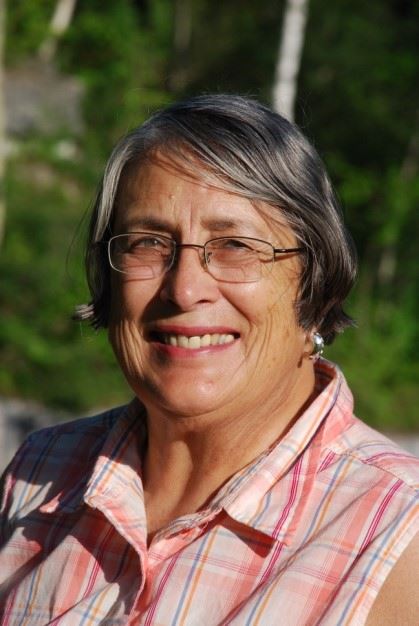 Harriette Phelps received her PhD from Ohio State University in 1964. She was Professor of Biological and Environmental Sciences of Federal City College and the University of the District of Columbia from 1978 to 2004. Her research interests have focused on the field of water pollution active biomonitoring using molluscs: Crassostrea virginica (metals, Chesapeake Bay nuclear power plant), Crassostrea gigas and Crassostrea angulata (TBT, Portugal) and Corbicula fluminea (Anacostia River watershed EPA Priority Pollutants). She has also studied the ecological effects of the invasive Corbicula fluminea clam population in the freshwater Potomac River estuary near Washington, DC and the Corbicula australis population in Australia.
Harriette Phelps received her PhD from Ohio State University in 1964. She was Professor of Biological and Environmental Sciences of Federal City College and the University of the District of Columbia from 1978 to 2004. Her research interests have focused on the field of water pollution active biomonitoring using molluscs: Crassostrea virginica (metals, Chesapeake Bay nuclear power plant), Crassostrea gigas and Crassostrea angulata (TBT, Portugal) and Corbicula fluminea (Anacostia River watershed EPA Priority Pollutants). She has also studied the ecological effects of the invasive Corbicula fluminea clam population in the freshwater Potomac River estuary near Washington, DC and the Corbicula australis population in Australia.
Phelps is a long-standing member of AERS, was an at-large Board member for several years, and is a recipient of the Venerable Clam. She has an impressive track record of sponsoring dozens of undergraduates in attendance at AERS meetings and presentation of their estuarine research. She is known within the AERS community for her tireless research activity, her commitment to working with her University of DC students to assess pollution effects on bivalves in the Anacostia River, and her steadfast promotion of women and undergraduate minority students’ participation in aquatic science.
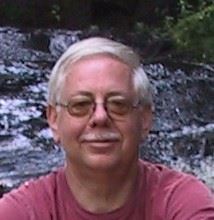 Steve Rebach received his Ph.D. in Biological Oceanography at the Graduate School of Oceanography at the University of Rhode Island. His area of expertise is in crustacean behavior and ecology, particularly in optimal foraging and sensory perception in Crustacea and in aquatic toxicology. He was Professor of Biology at the University of Maryland Eastern Shore (UMES) from 1985 to 1999 and chaired the Department of Natural Sciences from 1994 to 1996. He published over 50 scientific articles in peer-reviewed journals. At UMES, he mentored numerous masters and doctoral students. Rebach served as the Coordinator of the UMES Graduate Program in Marine, Estuarine and Environmental Sciences and Director of the Crustacean Research in Ecology and Mariculture Institute, both from 1986 to 1999. He joined North Carolina Sea Grant in 2000 as Associate Director for Research, and is an adjunct Graduate Faculty in the Department of Marine, Earth and Atmospheric Sciences at North Carolina State University.
Steve Rebach received his Ph.D. in Biological Oceanography at the Graduate School of Oceanography at the University of Rhode Island. His area of expertise is in crustacean behavior and ecology, particularly in optimal foraging and sensory perception in Crustacea and in aquatic toxicology. He was Professor of Biology at the University of Maryland Eastern Shore (UMES) from 1985 to 1999 and chaired the Department of Natural Sciences from 1994 to 1996. He published over 50 scientific articles in peer-reviewed journals. At UMES, he mentored numerous masters and doctoral students. Rebach served as the Coordinator of the UMES Graduate Program in Marine, Estuarine and Environmental Sciences and Director of the Crustacean Research in Ecology and Mariculture Institute, both from 1986 to 1999. He joined North Carolina Sea Grant in 2000 as Associate Director for Research, and is an adjunct Graduate Faculty in the Department of Marine, Earth and Atmospheric Sciences at North Carolina State University.
Rebach has been a long-standing member of AERS, serving as Treasurer as well as chair and member of several committees. He was especially encouraging of younger scientists in their participation in AERS, frequently bringing his graduate students to meetings. He received the Venerable Clam Award in 1997.
Schwarzschild, Arthur (deceased 3/15/2017)
 Arthur Schwarzschild received his BS from the University of Delaware in 1988, his MS from VIMS in 1993, and his PhD from UVA in 2004.
Arthur Schwarzschild received his BS from the University of Delaware in 1988, his MS from VIMS in 1993, and his PhD from UVA in 2004.
Schwarschild became the founding Director of the UVA Anheuser Busch Coastal Research Center, and the Site Director and Education/Outreach Coordinator of the Virginia Coast Reserve LTER Program in Oyster Virginia, where he oversaw the facility and developed a strong education program that combined the expression of coastal science through studio art and the written word. During this time he also served as a member of the local Climate Action Working Group and as a lifetime member of Citizens for a Better Eastern Shore. In his role as the LTER Education/Outreach Coordinator, he also reached out to the local schools of Northampton County to provide students with additional insight into the magnificent beauty of the coastal environment. Never one to turn down a request for help, he touched the lives of thousands of teachers, high school students and undergraduate and graduate students at UVA and other Universities. It is through these students that his legacy remains.
Schwarzschild’s life was characterized by his passion, integrity and compassion for his fellow humans. These traits were right up front; whether conducting research, helping others to do so, teaching students, serving as a local elections official or advocating for the important local causes that he held.
Schwarzschild joined AERS in 2002 as a doctoral student at UVA and continued to be active in AERS and CERF long after his graduation. He was awarded Honorary Membership to AERS posthumously at the fall 2017 meeting.
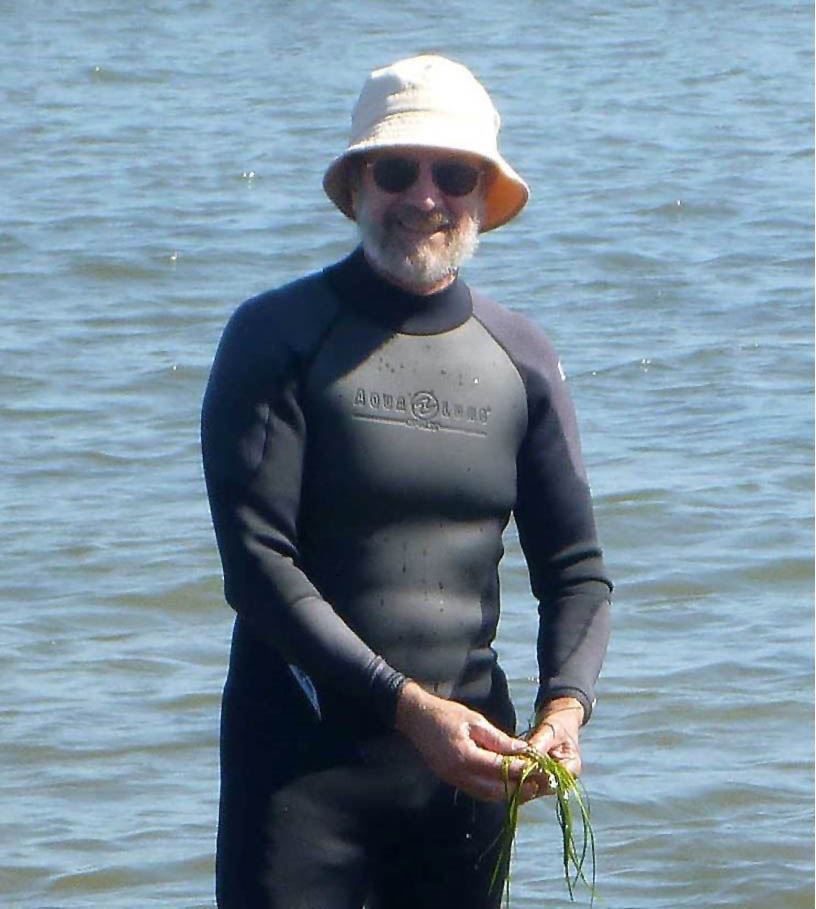 Chris Tanner received a B.A. in Biology from Occidental College and PhD in Botany from University of British Columbia. He is Professor Emeritus of St. Mary’s College and is widely known and appreciated by his former students as an exemplary advisor and mentor.
Chris Tanner received a B.A. in Biology from Occidental College and PhD in Botany from University of British Columbia. He is Professor Emeritus of St. Mary’s College and is widely known and appreciated by his former students as an exemplary advisor and mentor.
Tanner has had a remarkable career carrying out research on seagrasses and estuarine water quality while also meeting the demands of being faculty at a liberal arts college. From 2000-2003, he served as the Steven Muller Distinguished Professor of Sciences, from 1995-1999 was chair of the Department of Biology at St. Mary’s, and in 1994 was selected as an instructor for the “Mangrove Education and Training Programme for Belize.” Tanner also served as Co-Director of the St. Mary’s River Project, which focused on water quality monitoring and provided college students with hands-on experience in field and lab techniques. He always brought his undergraduates to the fore at AERS and CERF meetings, and he served AERS and CERF with generosity over his career, including a term as CERF Treasurer.
Van Engel, Willard (deceased, 12/25/2009)
 Willard Van Engel was born in Milwaukee, Wisconsin, and received his BS and MS in the late 1930s from the University of Wisconsin-Madison. He was stationed in Europe during World War II, where he served as a meteorologist in the U.S. Army Air Forces. In 1946, he was hired by the director of the Virginia Fisheries Laboratory (the precursor of Virginia Institute of Marine Science), and he went on to be one of the pivotal forces in the creation of VIMS and in the establishment of its library.
Willard Van Engel was born in Milwaukee, Wisconsin, and received his BS and MS in the late 1930s from the University of Wisconsin-Madison. He was stationed in Europe during World War II, where he served as a meteorologist in the U.S. Army Air Forces. In 1946, he was hired by the director of the Virginia Fisheries Laboratory (the precursor of Virginia Institute of Marine Science), and he went on to be one of the pivotal forces in the creation of VIMS and in the establishment of its library.
Van Engel was a nationally recognized crustacean biologist and a pioneer of Chesapeake Bay research, particularly on the blue crab. He developed important working relationships with the Virginia Marine Resources Commission, the fishing industry, and watermen. He also developed a fisheries survey for blue crabs, and compiled an astoundingly large data set on this organism.
He was among the first to study the relationship between recruitment dynamics and environmental parameters.
William W. Warner, the author of Beautiful Swimmers, referred to Van Engel as "the complete estuaries biologist, as much at home in theoretical discussions with his scientist colleagues as he is in meeting with watermen throughout the Bay.” One of his signature accomplishments was the choreography of the “mating dance of the blue crab.”
In 2003, VIMS presented Van Engel with its inaugural Lifetime Achievement Award for outstanding academic and scientific research contributions and continued support to VIMS. In 2006, the College of William and Mary presented him with an honorary doctorate of science. After retirement he enjoyed riding his horses, sharing time with friends, and participating in the Gloucester Point Rotary Club.
In a legendary meeting over breakfast in 1948, during the AAAS conference in Chicago, Van Engel, Nelson Marshall, and Eugene Cronin (known as the “Brackish Boys”) conceived of the idea for a professional society for estuarine scientists. This nucleus led to the creation of AERS.
Van Engel also served AERS as its first Secretary-Treasurer (1949) and second President (1950). He chaired the By-laws committee that authored the formal framework for AERS.
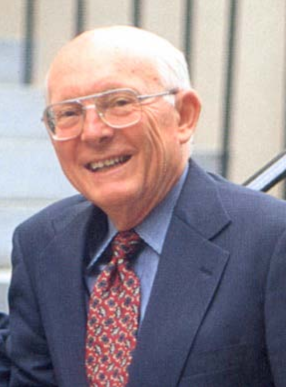 Frank John (F. John) Vernberg was born on November 6, 1925, in Fenton, MI, growing up on a working-class neighborhood in Detroit. He served in the US Navy from 1944-1946. During that time he met and married Winona Bortz, who was to become his lifelong companion and collaborator on extensive scientific work. He completed both a BS and MS in Zoology at DePauw University in 1949, and he and Winona both obtained PhDs from Purdue University in 1951. He began his career that year as an instructor at Duke University, and while there, began research at Duke Marine Lab, which was directed then by “Bookie” Bookhout, where his research became focused on the ecology and physiology of fiddler crabs. In 1956, he was appointed Assistant Director of the Laboratory.
Frank John (F. John) Vernberg was born on November 6, 1925, in Fenton, MI, growing up on a working-class neighborhood in Detroit. He served in the US Navy from 1944-1946. During that time he met and married Winona Bortz, who was to become his lifelong companion and collaborator on extensive scientific work. He completed both a BS and MS in Zoology at DePauw University in 1949, and he and Winona both obtained PhDs from Purdue University in 1951. He began his career that year as an instructor at Duke University, and while there, began research at Duke Marine Lab, which was directed then by “Bookie” Bookhout, where his research became focused on the ecology and physiology of fiddler crabs. In 1956, he was appointed Assistant Director of the Laboratory.
In 1969, Vernberg became founding Director of the newly formed Belle W. Baruch Institute for Marine Biology and Coastal Research, University of South Carolina, serving for 27 years and establishing it as a renowned research institution. He was also instrumental in establishing its interdisciplinary Marine Science Program. One year prior to retiring, he served as the founding Dean of the University of South Carolina’s new School of the Environment.
He and Winona were a true research/writing team. In 2001, they collaborated on a book, The Coastal Zone. Together, they published 127 papers in scientific journals and reports. They were both members of Phi Beta Kappa and recipients of a Fulbright-Hayes fellowship to study in Brazil. The Vernbergs are the only husband and wife team to receive the William S. Proctor Prize for Scientific Achievement (1983). Vernberg was also the recipient of a Guggenheim Fellowship (1957). He served as President of the American Society of Zoologists, the Estuarine Research Federation, and The Southeastern Estuarine Research Society. He was also on several editorial boards, including Biological Bulletin, Marine Ecology Progress Series, and Journal of Experimental Marine Biology and Ecology.
After retirement in 1996, the Vernbergs published The Coastal Zone: Past, Present and Future, a book designed to engage the general public in environmental issues. They also embarked on extensive international travel. Winona died in 2008, and Vernberg continued to travel regularly and to spend time with their very large family. In 2018, he published his memoir, It’s a Long Story, a compelling and humorous depiction of two amazing lives.
Williams, Jerome (deceased 6/7/2002)
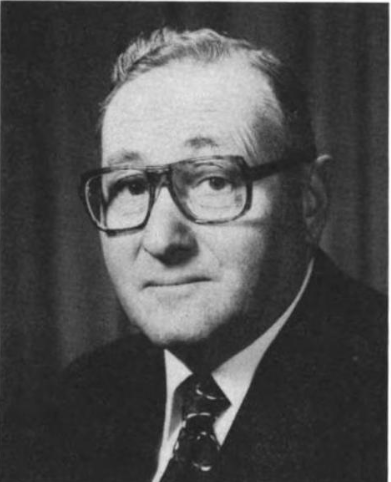 Jerome "Jerry" Williams was born in Toronto, Canada, and lived in Detroit, Mich., and Baltimore. He graduated from Baltimore Polytechnic Institute in 1944 and enlisted in the Navy, serving as an electronics technician until the end of World War II. He received an undergraduate degree in physics from the University of Maryland in 1950 and was one of the first four students to be awarded a master's degree in oceanography from Johns Hopkins University. In 1953, he married Lelia Katherine Holden and they moved to Annapolis.
Jerome "Jerry" Williams was born in Toronto, Canada, and lived in Detroit, Mich., and Baltimore. He graduated from Baltimore Polytechnic Institute in 1944 and enlisted in the Navy, serving as an electronics technician until the end of World War II. He received an undergraduate degree in physics from the University of Maryland in 1950 and was one of the first four students to be awarded a master's degree in oceanography from Johns Hopkins University. In 1953, he married Lelia Katherine Holden and they moved to Annapolis.
Mr. Williams worked on the research staff of the Chesapeake Bay Institute from 1952 to 1956 and as a marine physicist at Vitro Laboratories. He joined the faculty of the Naval Academy in 1957 and taught there until his retirement as Professor Emeritus of Oceanography in 1990.
Williams was active in research and development programs in underwater optics, marine pollution and oceanographic instruments. He also served as a consultant in estuarine pollution to various agencies and headed an energy-environmental study group at the academy.
He developed a salinometer considered to be the standard instrument for estuarine salinity measurement as well as a series of educational instruments, and was the author of college textbooks on oceanography and several scientific papers. In addition, he wrote two books for children.
Williams also played an important role in his community; he was active in Colonial Players of Annapolis for a number of years, serving as president, and was a former chairman of the Anne Arundel County Commission for Culture and the Arts. He was a charter member of the Unitarian Universalist Church of Annapolis and served as chairman of the board of trustees.
Williams was one of the founding members of AERS, and his contributions to the society spanned his entire career. Not only was he an active member of AERS his entire professional life, but he continued to serve the Society well into his retirement. Williams was AERS President from 1966-1967, served on many Society committees, and was a recipient of the Venerable Clam. When he retired as Executive Director of the Estuarine Research Federation in 1992, he accepted the position of AERS Newsletter editor, which he held from 1992 until March 2000. During his tenure as editor, he printed, in his own words, "all the news that would fit". Sometimes it was 14 point font and sometimes 10 point font, but it always fit.
Williams pioneered the development of optical systems for measuring water clarity. However, he was known within AERS for his witty and highly instructive discourses on the Secchi disk. His message was to always conduct our science with seriousness, but to take ourselves lightly.
Richard Williams received his MS from the Univ. of Wisconsin and his PhD from the Univ. of Georgia. An avid fisher and sailor, he began his career with the US Department of Defense, participating in Gulf Stream oceanographic research. He began his PhD work at Woods Hole, and completed it at U. GA with research on salt marsh diatoms at Sapelo Island Laboratory in 1963.
For the next 10 years, Williams conducted research at the NMF Radiobiological Lab in Beaufort, NC. During that time, he was an active participant at AERS meetings, and was AERS president from 1971-72. In 1972, he became the NSF Program Director for Biological Oceanography.
After retirement in 1987, he worked as a part-time consultant at the EPA.
Williams was a recipient of the Venerable Clam award.

